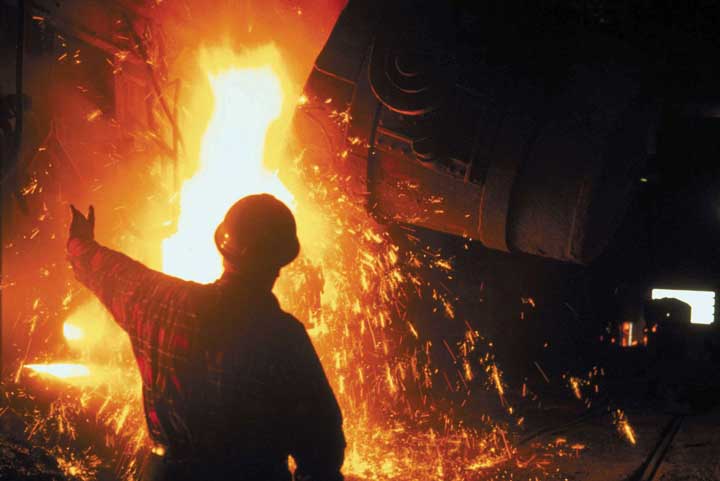This is “Designing a Motivating Work Environment”, chapter 6 from the book An Introduction to Organizational Behavior (v. 1.0). For details on it (including licensing), click here.
For more information on the source of this book, or why it is available for free, please see the project's home page. You can browse or download additional books there. To download a .zip file containing this book to use offline, simply click here.
Chapter 6 Designing a Motivating Work Environment
Learning Objectives
After reading this chapter, you should be able to do the following:
- Describe the history of job design approaches.
- Understand how to increase the motivating potential of a job.
- Understand why goals should be SMART.
- Set SMART goals.
- Give performance feedback effectively.
- Describe individual-, team-, and organization-based incentives that can be used to motivate the workforce.
Motivating Steel Workers at Nucor
Figure 6.1

Producing steel is hot and demanding work. Employees who are motivated are much more productive, as evidenced by Nucor’s success.
© 2010 Jupiterimages Corporation
Manufacturing steel is not a glamorous job. The industry is beset by many problems, and more than 40 steel manufacturers have filed for bankruptcy in recent years. Most young employees do not view working at a steel mill as their dream job. Yet, one company distinguished itself from all the rest by remaining profitable for over 130 quarters and by providing an over 350% return on investment to shareholders. The company is clearly doing well by every financial metric available and is the most profitable in its industry.
How do they achieve these amazing results? For one thing, every Nucor Corporation employee acts like an owner of the company. Employees are encouraged to fix the things they see as wrong and have real power on their jobs. When there is a breakdown in a plant, a supervisor does not have to ask employees to work overtime; employees volunteer for it. In fact, the company is famous for its decentralized structure and for pushing authority and responsibility down to lower levels in the hierarchy. Tasks that previously belonged to management are performed by line workers. Management listens to lower level employees and routinely implements their new ideas.
The reward system in place at Nucor is also unique, and its employees may be the highest paid steelworkers in the world. In 2005, the average Nucor employee earned $79,000, followed by a $2,000 bonus decided by the company’s annual earnings and $18,000 in the form of profit sharing. At the same time, a large percentage of these earnings are based on performance. People have the opportunity to earn a lot of money if the company is doing well, and there is no upward limit to how much they can make. However, they will do much worse than their counterparts in other mills if the company does poorly. Thus, it is to everyone’s advantage to help the company perform well. The same incentive system exists at all levels of the company. CEO pay is clearly tied to corporate performance. The incentive system penalizes low performers while increasing commitment to the company as well as to high performance.
Nucor’s formula for success seems simple: Align company goals with employee goals and give employees real power to make things happen. The results seem to work for the company and its employees. Evidence of this successful method is that the company has one of the lowest employee turnover rates in the industry and remains one of the few remaining nonunionized environments in manufacturing.
Sources: Adapted from information in Byrnes, N., & Arndt, M. (2006, May 1). The ART of motivation. Business Week, 3982, 56–62; Foust, D. (2008, April 7). The best performers of 2008. Business Week, 4078, 51–73; Jennings, J. (2003). Ways to really motivate people: Authenticity is a huge hit with Gen X and Y. The Secured Lender, 59, 62–70; Marks, S. J. (2001). Incentives that really reward and motivate. Workforce, 80, 108–114.
What are the tools companies can use to ensure a motivated workforce? Nucor seems to have found two very useful tools to motivate its workforce: a job design incorporating empowerment, and a reward system that aligns company performance with employee rewards. In this chapter, we will cover the basic tools organizations can use to motivate workers. The tools that will be described are based on motivation principles such as expectancy theory, reinforcement theory, and need-based theories. Specifically, we cover motivating employees through job design, goal setting, performance feedback, and reward systems.




